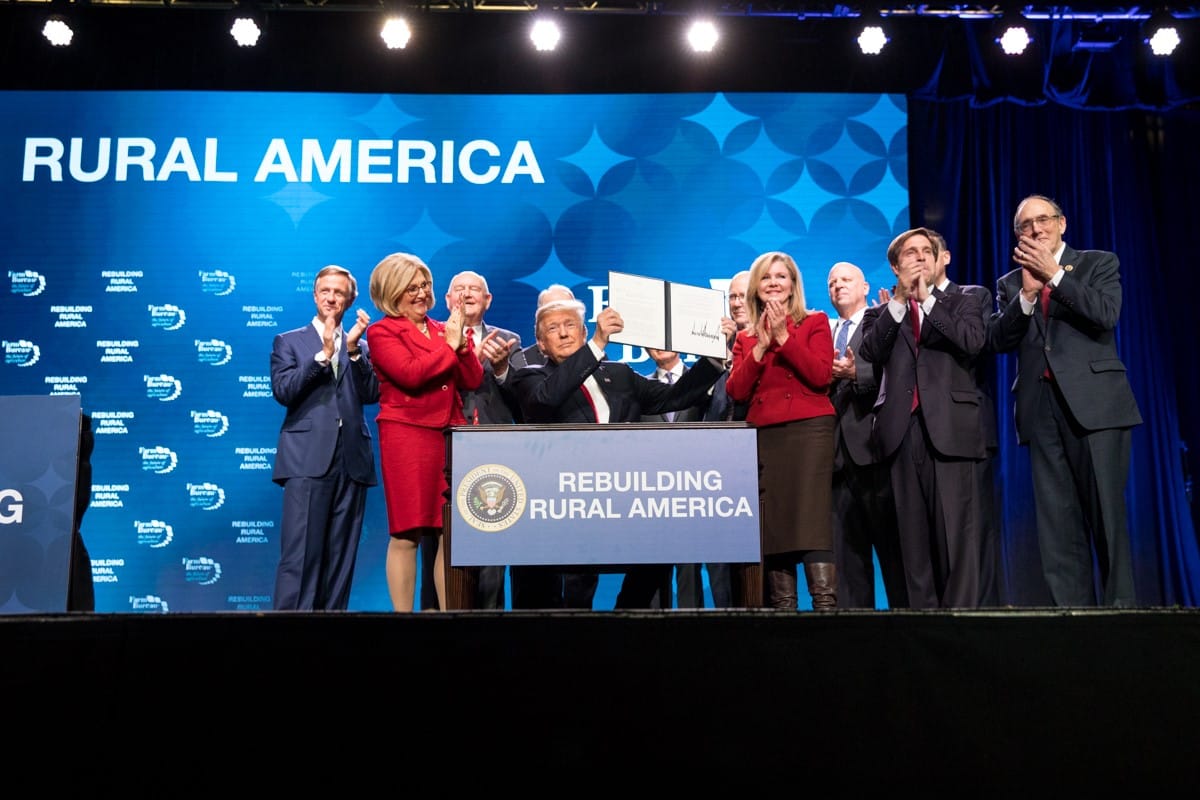Leaked Copy of Trump Administration’s Infrastructure Plan Shows Few Provisions for Broadband
WASHINGTON, January 22, 2018 – A leaked document purporting to be an outline of the Trump Administration’s forthcoming infrastructure plan makes few provisions for broadband or other digital infrastructure outside of rural areas. The six-page outline, which was first reported by Axios, bears the tit

WASHINGTON, January 22, 2018 – A leaked document purporting to be an outline of the Trump Administration’s forthcoming infrastructure plan makes few provisions for broadband or other digital infrastructure outside of rural areas.
The six-page outline, which was first reported by Axios, bears the title of “Funding Principles,” and sets out four programs which will receive different percentages of the total appropriation, the amount of which has not yet been revealed.
When asked for comment on the document’s apparent lack of attention to 21st Century infrastructure programs, White House Deputy Press Secretary Lindsay Walters told BroadbandBreakfast.com: “We’re not going to comment on the contents of a leaked document, but we look forward to presenting our plan.”
Half of the total funds will go to an ‘Infrastructure Incentives Initiative’
One half of the total appropriated funds will go to the White House’s “Infrastructure Incentives Initiative,” which will “[encourage] state, local and private investment in core infrastructure by providing incentives in the form of grants.” Such grants will be conditioned on achieving milestones set out in grant proposals within an identified time frame.
Proposals for infrastructure grants will be solicited every six months by the federal agencies in charge of such programs, and eligible entities will be limited to states (or groups of states), Puerto Rico and other United States territories, local governments (or groups of local governments), and metropolitan planning organizations.
Eligible projects, however, will be limited to transportation infrastructure projects, including surface transportation (roads) and passenger rail, maritime and inland waterway ports, and water infrastructure projects, including flood control, water supply, hydroelectric power, and water resources projects, such as drinking water and storm water facilities. Environmental projects at Brownfield and Superfund sites will be eligible as well.
Many eligible entities would not be permitted to apply for grants for broadband projects
Not only are broadband or other digital infrastructure projects not included in the program criteria, but many of the eligible entities would not be permitted to apply for grants for broadband projects because numerous states have laws explicitly forbidding such projects.
Telecommunications projects will be eligible for ten percent of any funds appropriated under the plan through what is referred to as the “Transformative Projects Program,” which makes available federal funding and technical assistance for “innovative and transformative infrastructure projects” which are too unique for the private sector to fund.
Projects receiving funding under the TPP would have to be “exploratory and ground-breaking,” and involve both more risk and a greater reward than standard infrastructure projects.
One areas explicitly includes broadband: The ‘Rural Infrastructure Program’
The only aspect of the plan that explicitly includes broadband and telecommunications projects is the “Rural Infrastructure Program,” which would account for one quarter of any appropriated funds for projects which are “designed to encourage investment to enable rural economies.”
States participating in the RIP program would be encouraged to establish public-private partnerships, with 80 percent of any RIP funding to be made available through the governors of participating states.
The other 20 percent would be earmarked for “rural performance grants” to be made on condition of the state publishing a “comprehensive rural infrastructure improvement plan” within 180 days of receipt of any funds.
Rural grants to be distributed as block grants without significant federal requirements
RIP funds would be distributed as block grants without Federal requirements other than a mandate to use any such funds for projects in rural areas with populations under 50,000 persons.
The plan’s lack of attention to broadband and other telecommunications infrastructure is noteworthy when contrasted with the Obama Administration’s broadband programs, which were mostly implemented with funds made available under the American Reinvestment and Recovery Act.
Under the ARRA, the Obama Administration distributed a combined $7.2 billion in loans and grants through the National Telecommunications and Information Administration’s Broadband Technology Opportunity Program and the U.S. Department of Agriculture Rural Utilities Service’s Broadband Incentives Program.
(Photo of President Donald Trump signing a rural broadband initiative by the White House.)








